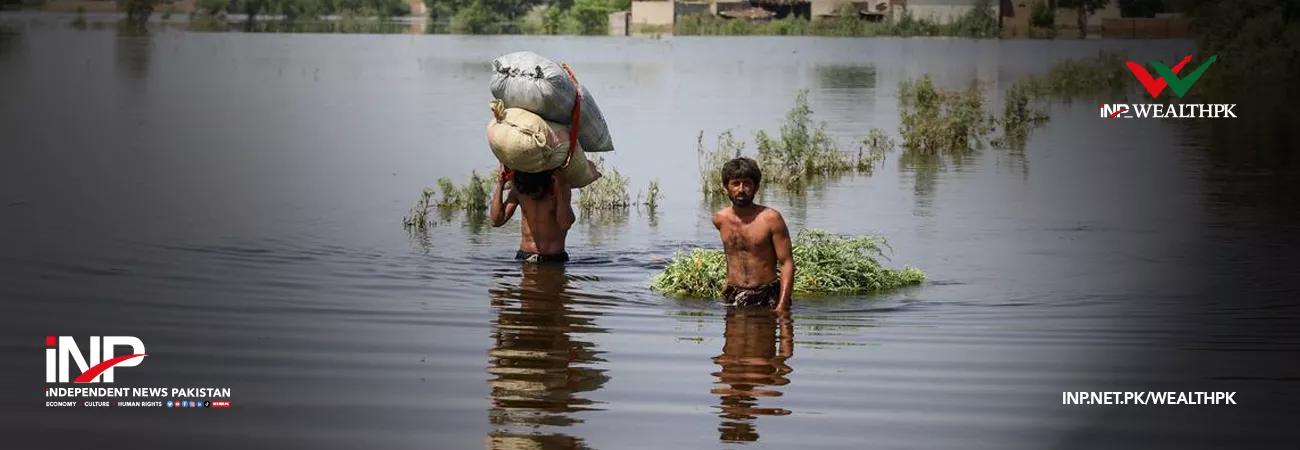INP-WealthPk
Pakistan has suffered huge losses to climate-induced disasters despite having negligible contributions to global greenhouse gas emissions. Pakistan is one of the top 10 most vulnerable countries to the threat of a changing climate because of its huge population and dependency on glacial waters from the North. These observations were shared by the environmental expert Dr Zafar Iqbal Shams, while speaking at the Muhammad Ajmal Khan Memorial Lecture Series, organized by the Dr Muhammad Ajmal Khan Institute of Sustainable Halophyte Utilization at the University of Karachi.
He referred to the “Global Climate Risk Index 2021,” prepared by a German think tank that asked, “who suffers most from extreme weather events?” in its research on global climate change. He said, “according to the study, Pakistan stood at number 8 among a list of 180 countries with a score of 29 in the Climate Risk Index. Every year Pakistan loses USD 3771.91 million in GDP and 502.45 people in lives lost to climate-induced disasters.”
He continued, “the World Bank has estimated that USD 10 billion have been lost to the recent floods in Pakistan, which destroyed 33 million homes and affected 33 million people directly or indirectly.” He said that the greenhouse gases were responsible for raising the temperature of the planet by trapping the heat of the sun.
“This trapped heat disturbs the weather patterns, and also results in the rapid melting of glaciers. Therefore, we see floods during summer season which destroy whole villages and wash away standing crops on thousands of hectares of land.” He added that global warming is also causing the rise in sea levels, increase in humidity and human diseases, and loss of biodiversity. “Many semi-deserts are converted into deserts due to water losses from their surface because of the rising temperatures.”
Dr Shams informed that 154 countries had signed an international treaty in June 1992 in Rio de Janeiro, Brazil, under the United Nations Framework Convention on Climate Change (UNFCCC) to reduce greenhouse gas emissions in the world to prevent climate change. He continued, “under the framework, member states meet every year in different cities to assess the progress on reducing greenhouse gases, which is generally called a Conference of the Parties (COP).”
He said that in COP 3, held in December 1997 in Kyoto, Japan, parties had pledged to establish a legally binding regime for developed countries to reduce six greenhouse gas emissions, namely, carbon dioxide, methane, dinitrogen oxide, hydrofluorocarbons, perfluorocarbons, and sulphur hexafluoride.
Despite the legally binding agreement, many developed countries are still producing greenhouse gases beyond their limits and thus they are contributing toward the polluting of the atmosphere. He said that in the latest COP 27 held in Egypt, parties have pledged to reduce greenhouse gas emissions by 45% before 2030. “The main target is to remain below the Celsius 1.5 degrees global average temperature.”
“In COP 27 for the first-time parties have agreed to provide ‘losses and damages funding’ to the countries which incur damages from climate induced-disasters.” He also mentioned that G7 and V20 (Vulnerable Twenty) launched a global shield against climate risks, with commitments of USD 200 million for initial funding. “Pakistan may benefit from the fund since it is one of the most vulnerable countries to climate-induced disasters. Moreover, the country has a low coping capacity to rebuild and recover from catastrophes,” he concluded.
Credit : Independent News Pakistan-WealthPk




